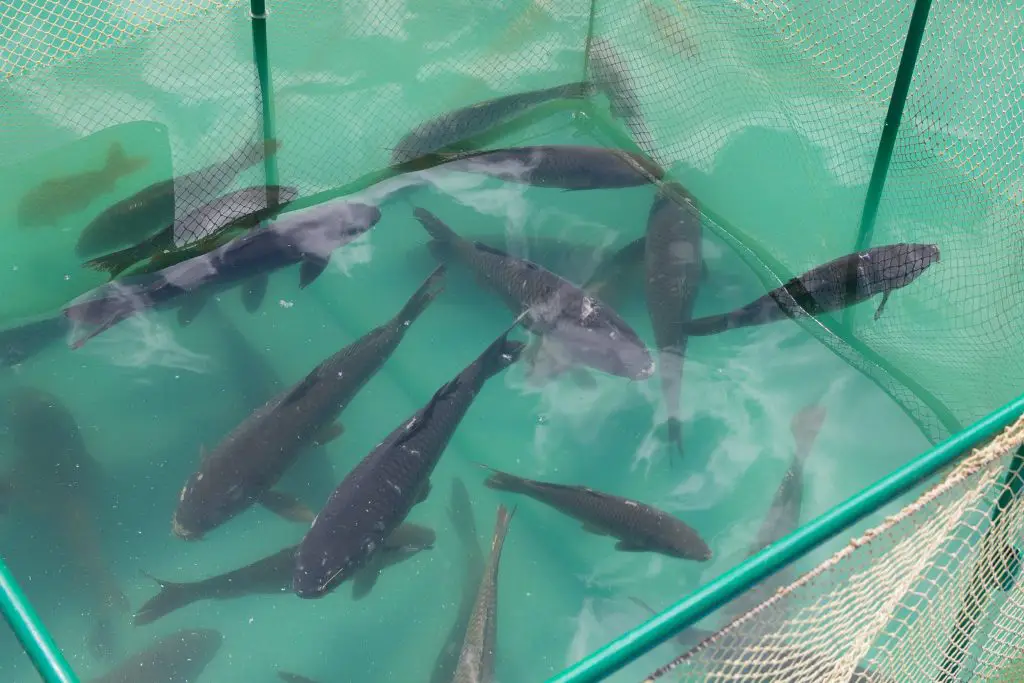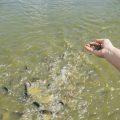Catfish are diverse species of fish that find food in many ways. Although most catfish are omnivorous, some are carnivorous, and carnivorous fish need to hunt for their prey. Many types of catfish hunt in groups when they are looking for food. Catfish have a great sense of smell and a large olfactory ability because their skin is part of their sensory system. When working together they have a better chance of eating by being able to surround or catch their prey, because they are fast swimmers.
The way catfish hunts
Now we know some of the catfish are only carnivorous, so they look for prey and eat them. Since there are so many different catfish in the wild, they all use unique ways to hunt the prey as they are well adapted to it.
Catfish alone do hunt fish and eat the prey, but they also have a unique way of hunting fish, which is in a group. Several catfish collaborate and hunt prey, which is then shared among them. To look for potential prey, they use their eyes and barbels, which can sense the environment. The eyesight of catfish is usually very good, and the barbels help them smell potential prey due to the dozens of sensory organs present in them.
Moreover, the fins on the catfish allow it to swim fast so it can catch up to the prey. When it comes to murky waters, most carnivorous catfish hide and wait for other insects or small fish to approach them, and then they attack them. Most of the catfish that live in murky water are brownish in color to be able to blend with the environment better. Basically, catfish are adapted to hunt their prey in many different ways depending on their environment.
What are carnivorous fish?
Carnivorous fish are fish that get most of their nutrients from other small fish, insects, and living organisms. They usually eat anything that fits in their mouths. Can carnivorous fish not eat plants and algae now? Yes, they can. However, the plants and other herbivorous food items do not provide any nutritional value to the fish.
On the other hand, omnivorous fish are both carnivorous and herbivorous, so they get nutrition from plants and small organisms. Carnivorous and omnivorous fish usually hunt the food or hide and wait for the food to come to them. Either way, they have well-designed features that allow them to eat food and remain a key food chain member. A more specific term for fish that hunt their food is “hyper carnivorous” fish, as they actively prey upon other living creatures.
Catfish that hunt for food
There are around 3,000 catfish in the wild, and they are divided into 36 families. There are many more catfish that are still unknown. Some catfish are carnivorous and hunt for food; we did not include omnivorous fish as they can also survive on plants.
Flathead catfish
As the name suggests, a flathead catfish has a flat head and is also known as the Mississippi cat, yellow cat, mudcat, or shovelhead cat. It looks like a typical catfish and feeds on fish, crustaceans, and water insects. They even feed on other catfish. It is mostly found in North American bodies of water, like lakes, rivers, and channels, especially dirty and cloudy water.
Blue catfish
Blue catfish are a larger species of catfish that can get around 5 feet long and weigh around 100 pounds as well. Due to their size, these carnivorous fish only eat other large fish and invertebrates in the water. Blue catfish are predominantly pale blue in color with olive hues and are a challenge for anglers due to their huge size and weight. Interestingly, blue catfish are also devoured by humans, and everyone loves how they taste.
Shovel-nose catfish
This beautiful catfish is also known as a tiger catfish due to the intricate patterns on its body. These huge fish can get even bigger than the blue catfish, at around 65 inches, or 6 feet, and weigh 220 pounds in the wild. These fish hunt smaller fish and love to eat meat-based foods in the water like earthworms, crayfish, and much more. These fish are also a famous food item among humans and a pretty interesting pet for aquarists.
Frog mouthed catfish
This fish is known by many names, like squarehead catfish, frogmouth catfish, angler catfish, and chaca chaca. It is one of the unique catfish species due to its pale appearance and also its calm behavior as they spend most of their lives motionless. The catfish eats many different fish as it waits for other fish to come closer and then swallows it whole. Even in aquariums, the fish only feeds on live victims and has intestines that can’t even digest carbohydrates.
African glass catfish
These are pretty small catfish that are very famous among aquarists as they are beautiful looking with transparent bodies. When in captivity, they must be kept in schools and fed mainly small insects, shrimp, and snails. There aren’t many food items that they can prey on, considering they only get around 5 inches in size. Despite their carnivorous tendencies, they are pretty peaceful and can be kept in a community tank.
Electric catfish
Although appearance-wise, it is nothing special and looks a little ugly, this unique fish has the ability to produce electricity of about 350 volts. These are carnivorous and use their electric shocks to hunt the prey, but mostly they are bottom feeders, so they eat small invertebrates, fish eggs, and detritus. These are also famous aquarium fish due to their unique abilities, like the ability to recognize their owner. In some parts of Africa, they are even eaten as delicacies, but they are not popular fish for eating.
In conclusion, although most catfish are not carnivorous, they are very well adapted to catching prey.













Pingback: Are Catfish Aggressive Towards Humans? | Reel Fishing Guru